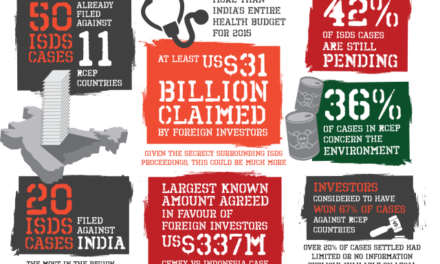; Many years ago, the economist Charles Kindleberger had identified the pattern of a financial crisis in his classic work, Manias, Panics and Crashes. The crisis is the last phase of a cycle which begins with an initial boom. The upswing usually starts with some change, such as new markets, new technologies or political transformations. It proceeds via credit expansion, rising prices, particularly of assets, and euphoria.Overtrading and then speculative mania emerge, “as a larger and larger group of people seeks to become rich without a real understanding of the processes involved”. Ultimately, the markets cease rising and, as a consequence, some highly borrowed players find themselves overstretched. This is the “distress” stage. Distress generates other failures, including some unexpected ones, and this is followed by a stage of “revulsion” or “discredit”. The final phase is a self-feeding panic, involving a downward free fall.
But then financial markets are notoriously prone to cycles; asset markets have always tended to go boom and bust. This in itself does not necessarily make for major real economic depression unless there are other deflationary forces operating, or unless the effects of the financial failures on the real economy are not counterbalanced by increased spending in some other way. Kindleberger recognised that major economic depressions do not result from credit cycles in themselves, but from a complex interplay of real and financial factors that reinforce each other. The central message of Keynes was that such a downward spiral can be broken by public action. The central message of Kindleberger'ss work is that in a global economy, such public action depends upon institutional arrangements, power configurations and division of national responsibilities which cannot be taken for granted to exist.
This is because deflationary tendencies have a tendency to be transmitted across countries, through trade flows of course, but even more significantly through the movements of private capital. In the interwar period which gave rise to the Great Depression, the fears of capital flight and inflation prevented governments from engaging in expansionary fiscal and monetary strategies which could have warded off the crisis. As Kindleberger pointed out, this could happen because in that period there was no clear leader in the capitalist world, ready to take on both the power and responsibilities associated with leadership.
Such a leader has to operate at both financial and real levels to prevent economic collapse. In terms of finance, there are three priorities: first, to prevent failures of highly leveraged speculative investors from generating systemic financial collapse; second, to meet the flight of capital from emerging markets with the provision of liquidity to countries in trouble; third, to respond to any contraction of credit domestically with determined monetary loosening. These correspond to the usual lender of last resort functions. In addition, the leader must also operate on the real economy, to ensure a continued expansion of demand and economic activity. This means running large trade deficits, and ensuring continued and expanding markets for the exports of countries facing economic difficulties. These have been described as the duties of the buyer of last resort, and they are as necessary for stable international capitalism.
It is fairly obvious that the world economy today is desperately in need of such a world leader, in terms of both buyer and lender of last resort. The current deflationary pressures – in terms of both financial and real economic variables – are stronger today than they have been at any time since the Great Depression. A snapshot view of the world economy today
reveals a picture of stagnation and decline that would have been simply unbelievable even two years ago.
Thus, most of the Asian region – including the most dynamic economies of the previous decade – is already in the midst of a substantial economic depression. For the crisis-ridden countries of East and Southeast Asia, GDP forecasts for the current year range from declines of 6 per cent in South Korea to around 10 per cent in Thailand to as much as 20 per cent in Indonesia. Even China has not been immune, despite its attempts to shore up domestic demand, and growth forecasts there have had to be cut. Meanwhile in Japan, continued attempts at fiscal expansion and monetary relaxation come to naught, as the infection from the East Asian depression refuses to go away.
In Europe, the situation is also bleak. The Russian economy is on the verge of complete collapse, and national income is expected to fall again for the ninth consecutive year, resulting in the sharpest economic decline in modern history, with output around half of the level of a decade ago. Even formerly socialist countries which have supposedly “recovered” have
barely managed to limp back to national income levels of the pre-transition period. In western Europe, output slowdown and high rates of unemployment persist despite all the hype surrounding the formation of the EU'ss single market, and notwithstanding the hopes generated by the future potential of the euro as one of the world'ss major currencies. In Africa, already one of the poorest regions in the world, per capita incomes have been falling in most countries for nearly three decades now and there are no signs of a reversal of this disastrous trend.
Latin America was being hailed by market analysts as a region that was finally coming out of its own crises induced by excesses of external debt and private capital inflow. Earlier this year it even seemed as if Latin America would emerge relatively unscathed from the financial crises besetting Asia and Russia. But the pressures stemming from lower commodity
prices and instability on international markets have begun to tell in the past two months. In the wake of the Russian debt default and devaluation, the continent has been buffeted by a wave of speculative pressure. Stock markets have plunged, currencies have come under pressure and bond yields have risen to their highest levels since the Mexican “Tequila” crisis of 1995. Once again, the most vulnerable economies are those of Brazil and Mexico. Indeed, Brazil is currently a focal point of the crisis raging through world financial markets. If Brazil goes, it will drag much of Latin America down with it. The impact of this on the US economy and financial markets would be considerable. Some observers have argued that a serious crisis in Brazil would be the proximate catalyst that could push the already slowing world economy into recession.
All this year, the US economy seemed to be the great survivor, even the beneficiary, of the gloom and doom in other markets. The flight to US assets from other financial markets in decline led to the equity boom which has in turn led a US consumer boom, driving personal savings rates in the US close to zero, and creating all the features of an asset price-led
bubble feeding into real economy expansion. Less than a year ago Alan Greenspan, chairman of the US Federal Reserve, said it was possible the Asian crisis would have a “salutary” effect on the US economy. His argument was that the damping effect would slow the US economy just enough to restrain inflationary pressures, but not by so much as to prompt a
recession.
Even Mr. Greenspan'ss tune has changed by now. Last month he admitted that “it is just not credible that the US economy can remain an oasis of prosperity unaffected by a world that is experiencing greatly increased stress.” In the past month US equity prices have stumbled badly as fears mount that the wider depression is coming home to America. There are at
least three reasons for these fears, which override the effects of the continued consumer boom in the US.
First, the global financial crisis is expected to bite harder. The increase in the US trade deficit in the first half of the year is likely to be the harbinger of more bad news. The Asian region has turned down further since then and the crisis has spread to Russia, among other countries. It also looks like causing mayhem in Latin America, which is even more important for the US. Second, US companies seem increasingly vulnerable to deflation. Many are being squeezed between a near inability to raise prices because of weakness in international markets and rising costs at home. The resulting crunch on corporate profits is likely to trim investment, which has been a big contributor to US growth in the past few years, and to weaken already nervous financial markets. Third, the stock market retreat in recent months is likely to reduce domestic demand. Since no one really knows the extent to which the movement of the market has affected consumer confidence and spending in the US, it is also difficult to judge the impact of the retreat, but the direction is inevitably negative in terms of
spending and economic activity.
This explains the gloomy nature of the current forecasts of world output growth. Mainstream private forecasters like JP Morgan have predicted US economic growth at a miserable 0.1 per cent next year. Growth in all emerging economies together, including those that have escaped contagion, is forecast to be only 1.3 per cent. Quite optimistically, JP Morgan
forecasts Japanese growth at 0.7 per cent and that of the European Union at 1.7 per cent. But for the world as a whole, all this means growth of only 0.9 per cent. It should be noted that all of these forecasts – of the IMF, of the OECD and of private forecasters, are being continuously revised downwards, which is another classic indicator of recession.
If history is any guide, the need for a leader to pull the capitalist system out of this slump is obvious. It is also clear that the IMF is too misguided in its policy responses and too small in terms of its resources, to play the role of lender of last resort. Indeed, the Bretton Woods institutions have earned such a bad name in the current crisis that even the London Financial Times now refers to them as “the gruesome twosome”. But in any case, the amount of resources required to prevent international financial debacle is certainly beyond their capacity.
Similarly the world desperately needs a major buyer of last resort. If the casualties of the financial meltdown in Asia, the teetering economies of Latin America, the oppressed primary exporters of Africa, and the devastated regions of the former Soviet Union are to recover, they must find markets for their goods in the west. Thus the developed capitalist countries must increase their imports from such regions dramatically on order to avoid a more generalised slump. Big trade deficits in the most prosperous nations are an essential part of a resolution of the present crisis.
So far, however, the US seems unwilling to take on the duties and responsibilities associated with leading world capitalism, and the response of most European leaders has been similarly unimaginative. It almost seems as if the world economy is condemned to a repetition of the widely read history of an earlier depression. Of course, that particular depression did
also mark the first systematic attempts at industrialisation in a range of underdeveloped countries across three continents. Could the forthcoming depression provide another such chance ?
* Dr Jayati Gosh is associate professor at the Centre for Economic Studies and Planning, Jawaharlal Nehru University, New Delhi, India and a regular commentator for the Indian national newspaper The Hindu.








